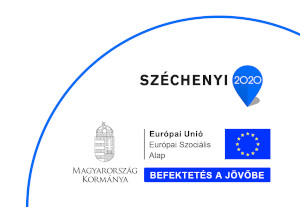General characteristics
The church’s ground plan follows the common type for Cistercian churches, which had square apses and the nave was divided by two pillars on either side after the crossing. At the southern end of the southern transept wing, on the sides nearest the nave, three-quarter corner columns with foliate capitals have survived on each side. Their style is related to the Hungarian royal court art of the 1230-1250s. The stone frames and jambs of the doors and windows were made of carved stone. There is a d...Read more
The church’s ground plan follows the common type for Cistercian churches, which had square apses and the nave was divided by two pillars on either side after the crossing. At the southern end of the southern transept wing, on the sides nearest the nave, three-quarter corner columns with foliate capitals have survived on each side. Their style is related to the Hungarian royal court art of the 1230-1250s. The stone frames and jambs of the doors and windows were made of carved stone. There is a door topped by a segmented arch leading from the transept to the neighboring groin-vaulted sacristy. The eastern wall of this has a narrow oblong window and a semicircular niche. A semicircular arched door connects the sacristy to the chapter hall, which has a window and a door on its eastern wall. Near a door in the remains of its western wall is a double window that originally had internal and external mullions, and the missing internal mullion was replaced by bricks. The corners of the double window and the door were made from cylindrical elements. A corridor was connected to the chapter hall and the wing was terminated with a dining hall opening to the west.
Read less
Külső leírás
Alaprajza a testvérrend, a ciszterciek típusát követi. A keletelt templom háromhajós, bazilikális rendszerű, egyenes szentélyzáródású, egyhajós keresztházzal, vélhetően torony nélkül épült. A hajót a négyezet után két-két pillér tagolta. A D-i kereszthajószárny D-i végében, a templomtér felőli oldalon, egy-egy leveles fejezetű, háromnegyed keresztmetszetű sarokoszlop maradt meg. Ezek stílusa az 1230-50-es évek magyarországi udvari művészetéhez kapcsolódik. A nyílászárók kőkeretei és bélletei far...Read more
Alaprajza a testvérrend, a ciszterciek típusát követi. A keletelt templom háromhajós, bazilikális rendszerű, egyenes szentélyzáródású, egyhajós keresztházzal, vélhetően torony nélkül épült. A hajót a négyezet után két-két pillér tagolta. A D-i kereszthajószárny D-i végében, a templomtér felőli oldalon, egy-egy leveles fejezetű, háromnegyed keresztmetszetű sarokoszlop maradt meg. Ezek stílusa az 1230-50-es évek magyarországi udvari művészetéhez kapcsolódik. A nyílászárók kőkeretei és bélletei faragott kőből készültek. A kereszthajóból szegmensíves záródású ajtó vezet a szomszédos, élkereszt boltozatú sekrestyébe, melynek K-i falába befelé táguló, téglány alakú résablak és félköríves falfülke mélyed. A sekrestyét félköríves záródású, élszedett ajtó kapcsolja a káptalanteremhez. A káptalanterem megmaradt szép részlete a gótikus ikerablak, amelyet középen levél és indadíszes fejezetű törpeoszlop díszít. A káptalanteremtől D-felé ásatásból ismert keskeny helyiség (lépcsőfeljáró/árnyékszék?), ettől D-re feltehetően a a refektórium következik. A keresztház falában a sekrestyeajtó fölött a kolostor emeletén volt dormitóriumba vezető ajtó nyílása maradt meg, melyhez feltehetően falépcső vezetett.
Read less
Általános állapot
felújított; pusztuló, veszélyzetett
Források
településre első adat: Tímár Péter: Magyarország középkori településeinek és egyházainak topográfiai adattára. IV. Szeged, 2019.;
templom v papja első adat (alapítás, építés, felszentelés): Gyulafirátót_premonrei rom_ Bozóki Lajos-Horogszegi Tamás_2019-2020_ MÉM MDK 48105 ltsz.
település birtokosa: Gyulafirátót_premonrei rom_ Bozóki Lajos-Horogszegi Tamás_2019-2020_ MÉM MDK 48105 ltsz.; MKL;
templom kegyura: Gyulafirátót_premonrei rom_ Bozóki Lajos-Horogszegi Tamás_2019-2020_ MÉM MDK 48105 ltsz.; MKL
középkori templom építési kora és átalakítása: Horogszegi, Veszprém Város Templomai. Veszprém, 2023. 197-205.; Gyulafirátót_premonrei rom_ Bozóki Lajos-Horogszegi Tamás_2019-2020_ MÉM MDK 48105 ltsz.,
16-17. századi történet: Gyulafirátót_premonrei rom_ Bozóki Lajos-Horogszegi Tamás_2019-2020_ MÉM MDK 48105 ltsz.; Tímár Péter: Magyarország középkori településeinek és egyházainak topográfiai adattára. IV. Szeged, 2019. 258.
történeti leírás 1701-1945: VEL_VIII_31_I_41_Gyulafiratot; Gyulafirátót_premonrei rom_ Bozóki Lajos-Horogszegi Tamás_2019-2020_ MÉM MDK 48105 ltsz.
történeti leírás 1945-: Gyulafirátót_premonrei rom_ Bozóki Lajos-Horogszegi Tamás_2019-2020_ MÉM MDK 48105 ltsz.
elhelyezkedés: https://www.oeny.hu/oeny/ivo/m%C5%B1eml%C3%A9k?torzssz=5493&azon=&nev=&statusz=&javved=&birsag=&tipus=&allapot=&cim=&megye=&telep=&vedes_eve=&datalas_reszlet=&datalas_relacio=&datalas_eve=
védelem mértéke: https://www.oeny.hu/oeny/ivo/m%C5%B1eml%C3%A9k?torzssz=5493&azon=&nev=&statusz=&javved=&birsag=&tipus=&allapot=&cim=&megye=&telep=&vedes_eve=&datalas_reszlet=&datalas_relacio=&datalas_eve=
védelem törzsszáma és azonosítója, ha van, védés ideje: https://www.oeny.hu/oeny/ivo/m%C5%B1eml%C3%A9k?azon=12656; https://www.oeny.hu/oeny/ivo/ingatlan?azon=126315 (letöltés: 2023.11.28.
mérete: rövidített levéltári vagy bibliográfiai adat
építészek, és kivitelezők: Gyulafirátót_premonrei rom_ Bozóki Lajos-Horogszegi Tamás_2019-2020_ MÉM MDK 48105 ltsz.
templom v papja első adat (alapítás, építés, felszentelés): Gyulafirátót_premonrei rom_ Bozóki Lajos-Horogszegi Tamás_2019-2020_ MÉM MDK 48105 ltsz.
település birtokosa: Gyulafirátót_premonrei rom_ Bozóki Lajos-Horogszegi Tamás_2019-2020_ MÉM MDK 48105 ltsz.; MKL;
templom kegyura: Gyulafirátót_premonrei rom_ Bozóki Lajos-Horogszegi Tamás_2019-2020_ MÉM MDK 48105 ltsz.; MKL
középkori templom építési kora és átalakítása: Horogszegi, Veszprém Város Templomai. Veszprém, 2023. 197-205.; Gyulafirátót_premonrei rom_ Bozóki Lajos-Horogszegi Tamás_2019-2020_ MÉM MDK 48105 ltsz.,
16-17. századi történet: Gyulafirátót_premonrei rom_ Bozóki Lajos-Horogszegi Tamás_2019-2020_ MÉM MDK 48105 ltsz.; Tímár Péter: Magyarország középkori településeinek és egyházainak topográfiai adattára. IV. Szeged, 2019. 258.
történeti leírás 1701-1945: VEL_VIII_31_I_41_Gyulafiratot; Gyulafirátót_premonrei rom_ Bozóki Lajos-Horogszegi Tamás_2019-2020_ MÉM MDK 48105 ltsz.
történeti leírás 1945-: Gyulafirátót_premonrei rom_ Bozóki Lajos-Horogszegi Tamás_2019-2020_ MÉM MDK 48105 ltsz.
elhelyezkedés: https://www.oeny.hu/oeny/ivo/m%C5%B1eml%C3%A9k?torzssz=5493&azon=&nev=&statusz=&javved=&birsag=&tipus=&allapot=&cim=&megye=&telep=&vedes_eve=&datalas_reszlet=&datalas_relacio=&datalas_eve=
védelem mértéke: https://www.oeny.hu/oeny/ivo/m%C5%B1eml%C3%A9k?torzssz=5493&azon=&nev=&statusz=&javved=&birsag=&tipus=&allapot=&cim=&megye=&telep=&vedes_eve=&datalas_reszlet=&datalas_relacio=&datalas_eve=
védelem törzsszáma és azonosítója, ha van, védés ideje: https://www.oeny.hu/oeny/ivo/m%C5%B1eml%C3%A9k?azon=12656; https://www.oeny.hu/oeny/ivo/ingatlan?azon=126315 (letöltés: 2023.11.28.
mérete: rövidített levéltári vagy bibliográfiai adat
építészek, és kivitelezők: Gyulafirátót_premonrei rom_ Bozóki Lajos-Horogszegi Tamás_2019-2020_ MÉM MDK 48105 ltsz.
Irodalomjegyzék
Tímár Péter: Magyarország középkori településeinek és egyházainak topográfiai adattára. IV. Szeged, 2019.; 257-258.; Horogszegi Tamás: Gyulafirátót premontrei kolostor és templom romjai. In: Veszprém Város templomai. Szerk.: Jankovics Norbert. Veszprém, 2023. 197- 205.; Gyulafirátót, Premonrei templom- és kolostorrom építéstörténeti tudományos dokumentációja. Bozóki Lajos-Horogszegi Tamás. 2019. MÉM MDK 48105 ltsz.; Henszlmann Imre dr. , Honi műemlékeink hivatalos osztályozása. AÉ 5. (1885) XVIII.; Pamer Nóra, Klosterruine der Prämonträer . AÉ 92. (1965.) 244.; Pamer Nóra, A gyulafirátóti középkori premontrei monostor feltárása. VMK 6. (1967) 239-245.

